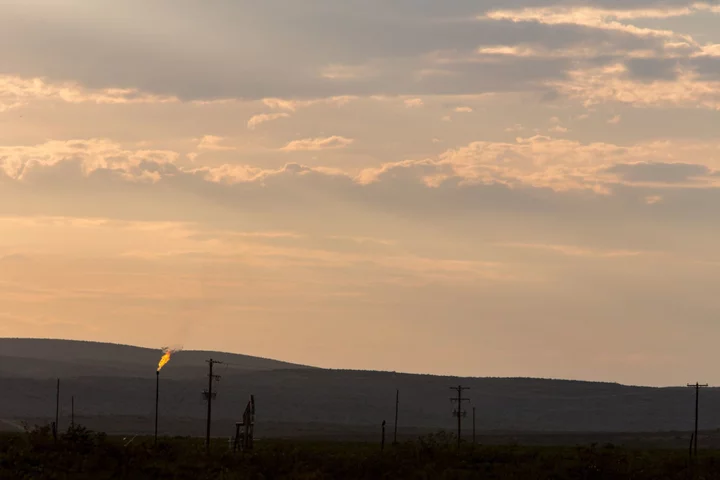Analysts have a more precise measurement of how much US natural gas goes directly into the atmosphere, worsening climate change far more than if it was first sold in the marketplace for energy. About 2.2% of all methane extracted in the US ends up escaping across the natural gas supply chain, according to a new index that combines estimates with data collected in aerial flyovers to document the scale of the problem.
The new finding comes from a methane-intensity index set to be announced Thursday by MiQ and Highwood Emissions Management, which is aimed at spurring market implications for companies that produce and transport natural gas. By establishing a national baseline, the index could ward off natural gas buyers and investors from producers whose methane emissions run high.
“There's nowhere for the laggards to hide,” said Lara Owens, science and technology director at MiQ, an independent certification nonprofit behind the index. “Their gas should be sold at a discount, their gas should get less favorable contracting terms.” The idea is not just that cleaner gas could command a premium, she said, but that “there’s also a penalty for not being transparent about your emissions or not doing something about them.” Highwood Emissions Management, the other group backing the index, is a Calgary-based management software and consulting firm.
The new methane-intensity index arrives at a time of increasing scrutiny of the leaks across the US natural gas supply chain, which has challenged the fuel’s credibility as a cleaner alternative. In coming weeks the US Environmental Protection Agency is expected to propose its plan for implementing a new fee on methane emissions mandated by the Inflation Reduction Act.
Methane — the main component of natural gas — traps more than 80 times the heat of carbon dioxide during its first two decades in the atmosphere. That potency makes stifling methane leaks an urgent short-term target in the fight against climate change. But it’s been difficult to measure leaking methane. Better data on what escapes from valves, pipelines and wells could reveal that some natural gas rivals the planet-warming impact of coal. Researchers say that tipping point comes once 3% to 4% of produced natural gas escapes into the atmosphere.
The new index stitches together so-called “bottom-up” estimates of emissions from sample equipment with “top-down” measurements collected in 2021 by aerial surveys of key gas-producing areas in the US. Both types of data are important.
A report last month from the Clean Air Task Force, Ceres and ERM Group Inc. using bottom-up estimates filed with the EPA found the intensity of methane emissions from oil and gas production dropped 28% between 2019 and 2021. Preliminary research using aerial measurements from Kairos Aerospace and Carbon Mapper — and incorporated into the new index — showed wide variation in methane emissions as a share of natural gas production, ranging from 0.75% to 9.63%.
Studies have consistently found that government estimates lowball the scale of methane leaks, and the new index underscores just how big that gap can be. Across the natural gas supply chain, MiQ and Highwood’s analysis points to emissions and leakage rates that are roughly double the estimates by the US government. For natural gas production operations — just the wells, tanks and equipment at a production site — the national average methane-emission intensity from the index is 1%, which is far higher than EPA estimates. The index identifies more emissions from pipelines and the rest of the supply chain. (A report detailing the methodology used in the index is expected to be released next week.)
Georges Tijbosch, MiQ’s chief executive officer, said the initiative could help drive regulatory and financial benchmarks for methane intensity in the US natural gas market — along with deeper emission reductions. Operators whose leaks exceed the 1% average will face questions.
“If you can’t prove that you’re way below that number,” Tijbosch said, “then I think in a year or two or three the position for many operators is going to become very tough.”
--With assistance from Eric Roston.

